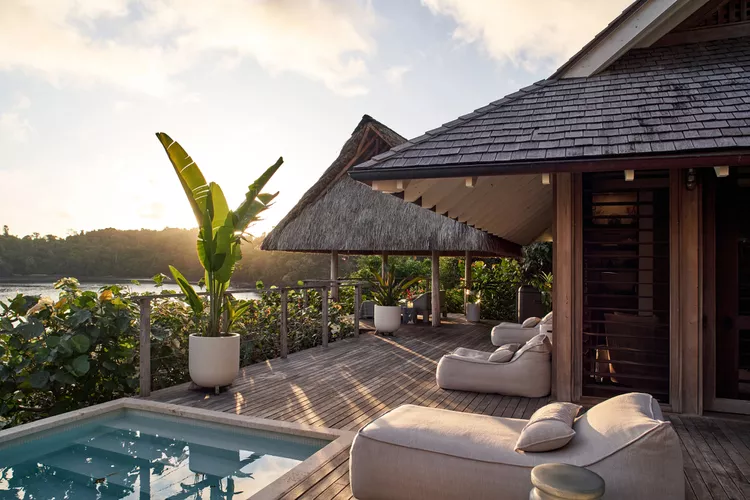1. Overview
This Central American country, rich in natural beauty but often overlooked by visitors, is finally coming into its own.
2. Discover Panama’s Natural Wonders
Our helicopter swooped skyward with an easy bound and Panama City came into view almost instantly — hundreds of gleaming skyscrapers silhouetted against the Pacific. A dozen ships queued neatly, waiting to enter the world’s most aesthetically pleasing marvel of engineering: the Panama Canal.
As we zipped above the waterway, I was awed by the audacity of its creation. The canal, completed in 1914, operates 24/7, like a conveyor belt, passing vessels back and forth between the oceans. Ships the length of several football fields glided past tidy parcels of farmland and Soberania National Park, a 55,000-acre natural preserve. From inlets covered in neon-green algae, snow-white egrets took flight over ships stacked with thousands of brightly colored containers — imagine a mash-up of Gauguin and Mondrian.
3. Understanding Panama’s Historical Context
Panama has long been seen more as a trading post than a destination. From the days of colonists and pirates to the more modern era (of, say, bankers and lawyers servicing offshore corporations), its touristic charms have gone largely unappreciated. Since the U.S.-led ousting of strongman Manuel Noriega in 1989, the country has marched steadily, if improbably, toward prosperity and political stability.
4. Exploring Biodiversity and Attractions
With almost 13 million acres of the world’s most biodiverse rainforest, rich with jaguars, hummingbirds, and two thousand butterfly species (take that, Costa Rica), plus some 1,800 miles of unsullied coastline, Panama is poised for a tourism boom. Historically, lodgings outside the capital have contented themselves with hosting the budget-conscious backpacker crowd. In the past few years, however, thanks to government initiatives and the efforts of conservation-focused developers, a new class of luxurious resorts has come to offer a cushier way into the country’s insanely unspoiled attractions.
5. The Urban Experience in Panama City
I immediately sensed this newfound energy in Panama City, which felt far more cosmopolitan and international than I had expected. My first stop was Sofitel Legend Casco Viejo, a stately property located on the edge of Panama Bay in the city’s old quarter. Open since January, the hotel is a thoughtful restoration of the once-chic but long dormant Union Club, the former gathering place for industrialists and politicians. Decorated with nautical accents, it still has the feel of a private club, or maybe a mansion belonging to a rich auntie who happens to serve grilled octopus on her waterfront terrace.
I’d expected urban chaos beyond the elegant lobby, but a stroll around the neighborhood proved calm, quiet, and unexpectedly French. The Casco Viejo district dates to the late 17th century and is often compared with New Orleans’ French Quarter. The neighborhood sprawls for many blocks, a world apart from the skyscrapers of downtown. As I walked down narrow, cobblestoned streets past colonial-era churches and plazas, I understood why it was designated a UNESCO World Heritage site in 1997. Rows of rejuvenated Spanish, French, and Caribbean buildings with latticed balconies and carved wooden doors provide a genteel setting for coffee shops, bars, and restaurants.
6. Culinary Discoveries
I found a burgeoning and eclectic foodie scene at places like Maito, in the ritzy Coco del Mar neighborhood, which offers a wide-ranging tasting menu of chow mein, ceviche, and pesca afro, a fried white fish served with a coconut curry sauce. The next evening, at Fondo Lo Que Hay, I tried the gaucho, a rice porridge with pork belly, egg, and tomato, before devouring the 74-hour-marinated, double-fried chicken (served with mashed potatoes and a sinful amount of butter).
7. Relaxation in Bocas del Toro
If Panama City felt like a genuine metropolis, the vibe in Bocas del Toro, an hour’s flight northwest, was distinctly more relaxed. At the end of the 19th century, the United Fruit Company established itself in Bocas (an estimated 325,000 tons of bananas still leave the port each year), and built scores of pastel colonial-style wooden houses, many of which remain intact. Essentially inaccessible by road until the 1980s, the area is distinguished by its rich Caribbean culture and pristine biodiversity.
Bocas Town, as it’s known, is also the gateway to the Bocas del Toro Archipelago, made up of nine islands and more than 200 tiny islets. I was headed to Nayara Bocas del Toro, a private island preserve 20 minutes away by boat.
8. Exquisite Accommodations
Opened in 2021, Nayara Bocas del Toro is entirely off the grid and nearly fully solar-powered. The lodge, which caters to adults only, consists of 16 luxurious overwater villas, each with a private plunge pool and terrace with a firepit. In the middle of the overwater boardwalk sits the Elephant House, Nayara’s restaurant, a 100-year-old structure imported from Bali.
9. Environmental Sustainability
Nayara’s owner, a retired tech entrepreneur named Dan Behm, described his pursuit of ultra-sustainability as an ongoing evolution. In 2015, he bought El Castillo, a small luxury hotel on Costa Rica’s southern Pacific coast. Two years later, eager for a new challenge, he found himself scouting Central America for another beachfront property. In the end, he bought Isla Frangipani, the tiny island with 88 acres of mangroves where the resort is located. “People talk a lot about sustainability,” he told me, “but sometimes they’re just doing it to look good. Mangroves are the midwives of vast swaths of marine life. If we want to offer access to them, we have to preserve what we find and take care of it.”
10. Conclusion
I’d arrived in late afternoon. The sun set out of view, behind the island, but the placid Caribbean horizon beyond my window offered a contemplative charm all its own. In conclusion, Panama is an emerging destination that offers incredible natural beauty, rich culture, and luxurious experiences for travelers.





